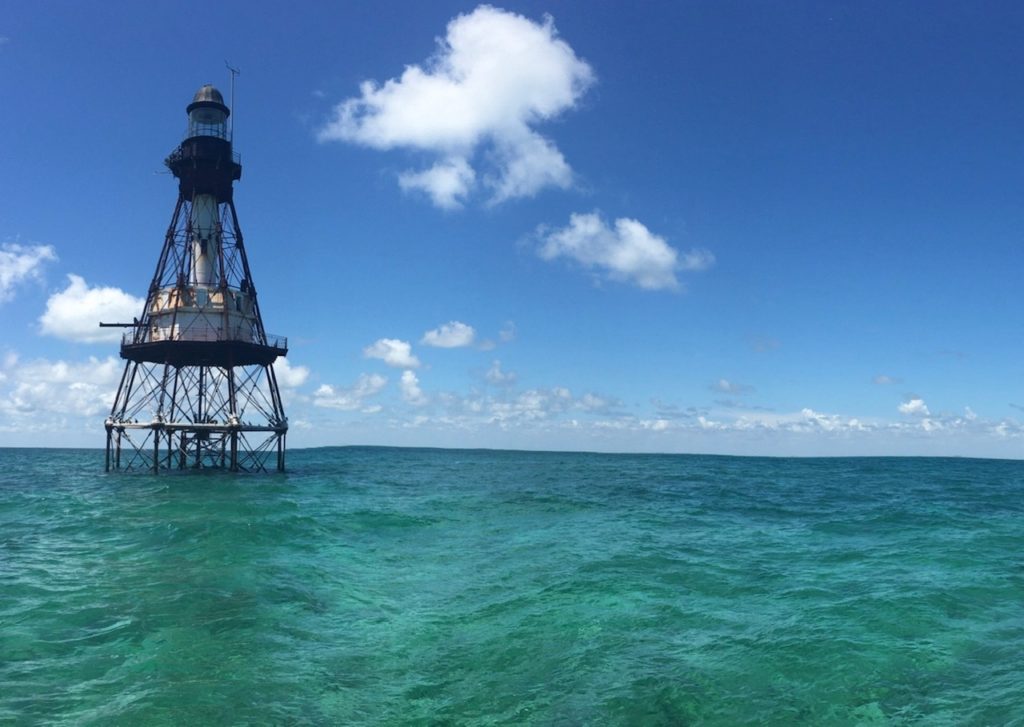How much does fear motivate prey, and what impact do predators have on organisms that share their habitats?
Northeastern Three Seas Program alumni Lindsay M. Phenix partnered with Dana Tricarico, Enrique Quintero, Mark Bond, Simon Brandl, and Austin J. Gallagher to dive into some of the unanswered questions around this topic.

Lindsay Phenix led the marine predator study published recently in Ecology and Evolution
The team used baited remote underwater video stations (BRUVs) in different habitats to capture predators and prey on camera and determine behavior change in relation to predator prevalence and habitat complexity.
Researchers hypothesized that in more complex habitats, predators would be more active, and that prey would take less risks. They also hypothesized that in habitats with less cover and complexity, prey would be more hesitant to take the bait and therefore take longer to arrive at the BRUV.
In their study, published recently in Ecology and Evolution, Phenix and her collaborators complex habitats were determined by coverage of 50% or more of sand, coral reef, seagrass, or sea fan. Sandy habitats may offer prey less hiding spaces than a seagrass habitat. Each habitat was assessed for risk by researchers considering both how much the predators moved around and how many predators were present.
Predators were also ranked into categories based on type and size. For example, a moray eel would rank as a mid-trophic predator and a barracuda would rank as an upper-trophic predator.
For consistency of light and time of day, in each habitat the BRUVs were submerged for an hour at a time, always between 8:00 A.M. and 1:30 P.M. All research was done in Biscayne Bay, Florida, a perfect shallow lagoon connecting to the Florida Reef Tract and extending down to Key Largo with an abundance of each habitat studied.
The researchers observed that prey in less covered habitat areas approached the BRUV more quickly than in higher coverage areas, and suggested that this could be  due to the restricted access to food for prey in those areas and therefore more immediate demand. They hypothesized also that prey may prefer to feel they have many avenues of escape from potential predators, which would be consistent with the finding that prey may be apprehensive in complex habitats because of the potential for view obstruction.
due to the restricted access to food for prey in those areas and therefore more immediate demand. They hypothesized also that prey may prefer to feel they have many avenues of escape from potential predators, which would be consistent with the finding that prey may be apprehensive in complex habitats because of the potential for view obstruction.
In those less complex, more exposed habitats such as sandy bottom and seagrass bed, the prey definitely display different behaviors such as burst-swimming and schooling which may affect their long-term fitness and energy levels.
The central takeaway from Phenix is that predators do not control prey behaviors on short temporal scales, but instead “a habitat‐specific response to a consistent signal of mobile predators on reefs may result in pro‐active prey vigilance and subtle food‐risk trade‐offs.” This highlights the complexities of these marine ecosystems and the need to continue to study the many drivers of behaviors in habitats.
The main takeaway from Phenix et al. is, indeed, an interesting finding, proving once again that so many interactions in marine habitats remain understudied and unpredictable- even for trained scientists.

